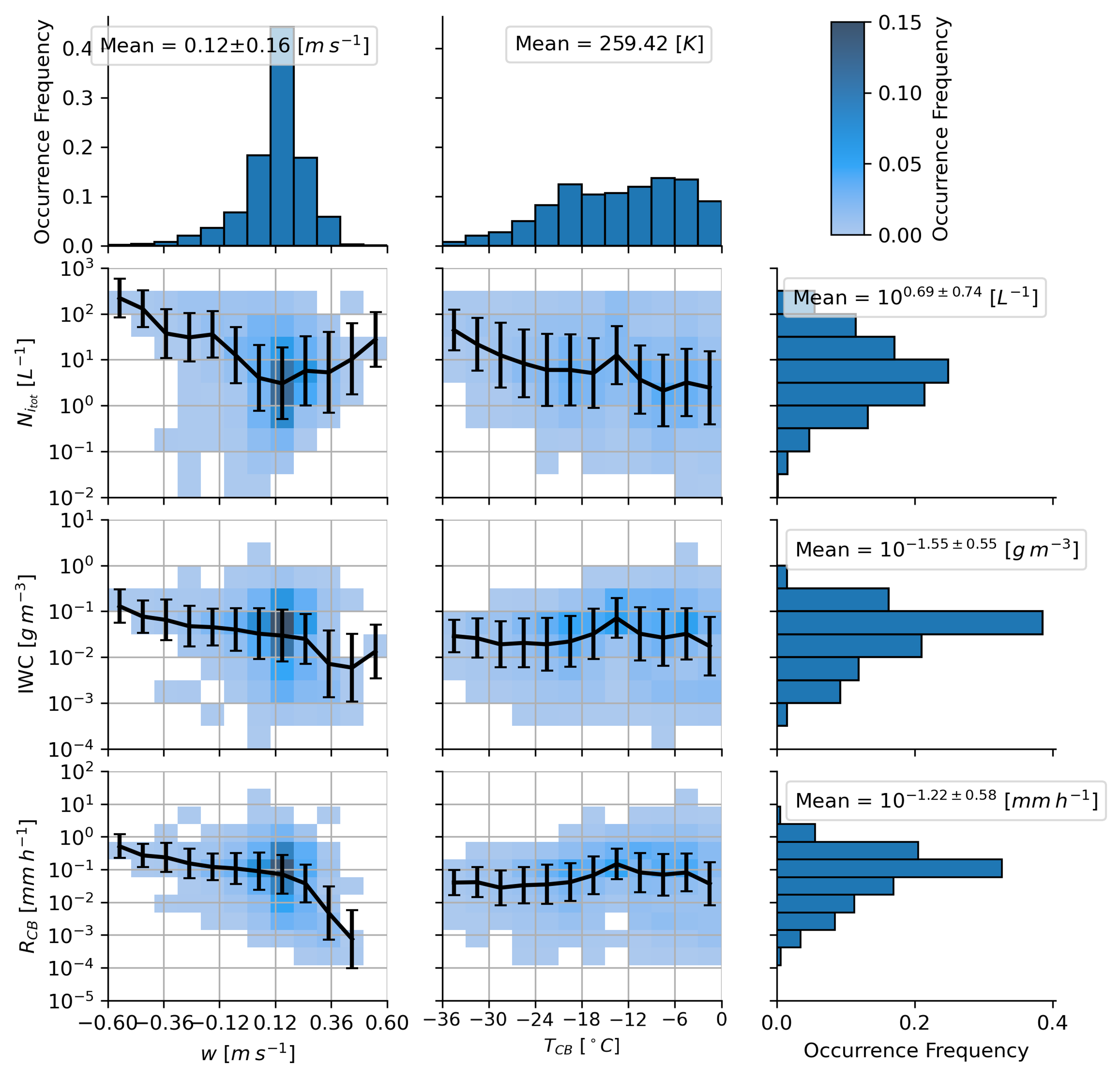A comprehensive analysis of mixed-phase cloud-base snow properties over an arctic ARM site
Submitter
Silber, Israel — Pacific Northwest National Laboratory
Area of Research
Cloud Processes
Journal Reference
Silber I 2023. "Arctic Cloud‐Base Ice Precipitation Properties Retrieved Using Bayesian Inference." Journal of Geophysical Research: Atmospheres, 128(16), e2022JD038202, 10.1029/2022JD038202.
Science

Figure 1. Joint distributions of vertical motion (w), cloud base temperature (TCB), cloud base ice precipitate rate (RCB), ice water content (IWC), and cloud base ice number concentration (Nitot) samples, all of which were retrieved from the NSA data set. From journal.
By applying an inverse model, which leverages a Markov Chain Monte Carlo algorithm, to a long-term (~7.5 years) ARM radar and lidar data set from the Utqiagvik, North Slope of Alaska site, mixed-phase cloud-base ice precipitation (snow) properties were robustly retrieved. Results show intriguing links between various thermodynamic and ice properties, such as apparent ice number concentration enhancements at temperatures of −5 and −15 °C, which could suggest possible secondary ice production (SIP) but nonetheless alludes to a potential overestimation of SIP occurrence and intensity around those temperatures, especially in studies relying only on radar or lidar measurements.
Impact
Arctic clouds, which are predominantly stratiform and supercooled, often long-lived, and nearly continuously precipitate ice particles, contribute roughly 10% of the uncertainty attributed to the global cloud feedback. This arctic cloud uncertainty is driven by incomplete observational and theoretical knowledge required to estimate and explain the state and active processes occurring in those clouds. A focus on ice precipitation properties at arctic cloud base rather than the surface deconfounds the product of cloud condensate sink processes from the influence of the atmospheric thermodynamic state below cloud base, rendering cloud-base properties, such as those described in this paper, a more appealing target for inference and evaluation of model simulations.
Summary
Analysis of the resultant mixed-phase cloud-base ice data set suggests that overestimation of SIP event occurrence and intensity in the columnar and dendritic growth regimes is likely in some studies constrained by active remote-sensing measurements. However, the development of comprehensive scattering data sets for habits with extreme aspect ratios would enable more robust and accurate estimates of ice properties using methodologies such as the one presented here. Assuming that the examined total ice number concentration enhancements around −15 and −5 °C are SIP events, we found that the underlying SIP mechanisms are likely sublimating dendrite fragmentation and rime splintering, respectively. The analysis also suggests that a Gamma-type particle size distribution shape parameter (μ) value of 4 is a suitable value for mono-modal ice PSD and that the temporally averaged arctic cloud-base vertical motion is 0.12 ± 0.16 m s−1, much smaller than some previous estimates. Finally, the ice data set is also used to derive reflectivity-dependent estimates of cloud-base precipitation rates and ice water contents, which can generally represent the local variability of those parameters.
Keep up with the Atmospheric Observer
Updates on ARM news, events, and opportunities delivered to your inbox
ARM User Profile
ARM welcomes users from all institutions and nations. A free ARM user account is needed to access ARM data.


















